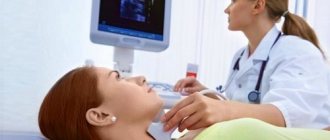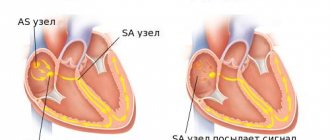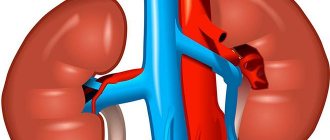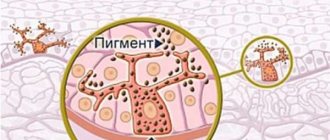What does a gastroenterologist treat?
A gastroenterologist specializes in the diagnosis and treatment of gastrointestinal diseases. If you experience abdominal pain, irregular bowel movements, frequent constipation or diarrhea, belching or regular heartburn, you should contact a gastroenterologist who treats:
- colitis;
- gastritis;
- duodenitis;
How to treat intestinal dysbiosis? dysbacteriosis;- peptic ulcer;
- pancreatitis and other gastrointestinal diseases.
In the initial stages, many digestive disorders have similar symptoms. To make an accurate diagnosis, examinations are prescribed:
- Ultrasound of the abdominal organs;
- endoscopic examinations: gastroscopy, colonoscopy;
- X-ray examination methods: for example, irrigoscopy;
- urine, stool and blood tests.
Studies show the functional state of the gastrointestinal tract, identify the concentration of digestive enzymes, which allows the gastroenterologist to make a diagnosis and select a treatment regimen.
Is gastritis contagious or not?
Inflammation of the gastric mucosa occurs for various reasons. For example, it can be caused by uncontrolled use of medications, abuse of spicy and smoked foods, and constant stress.
Scientists also consider the bacterium Helicobacter pylori to be an important factor in the development of gastritis. Microorganisms attach to the walls of the stomach and produce substances that reduce the acidity of the environment. As a result of their vital activity, the mucous membrane is gradually destroyed, ulcerations of the walls occur and gastritis develops.
The Helicobacter bacterium can be infected through food, water, or kissing a carrier of the pathogen. But in 90% of cases, the presence of this microorganism in the stomach does not lead to the development of chronic gastritis. In order for the disease to develop, other factors are also necessary: for example, reduced immunity, systematic poor nutrition. Therefore, gastritis is not considered a contagious disease.
Chronic superficial gastritis
Chronic superficial gastritis is a long-term persistent disease, the pathogenesis of which is inflammation of the gastric mucosa. The clinical significance of chronic gastritis lies not so much in the prevalence of the disease, but in its progression and possible transition to an ulcer or stomach cancer.
Gastroenterology studies the characteristics of the occurrence and development of pathology, as well as the development of new diagnostic and treatment methods. Factors in the development of chronic superficial gastritis are divided into external and internal.
The use of medications, such as nonsteroidal anti-inflammatory drugs, corticosteroids, certain antibiotics, anti-tuberculosis medications, and so on, plays a role in the appearance of chronic superficial gastritis.
Helicobacter pylori infection plays a leading role in the progression of the disease. This bacterium destroys the mucous-bicarbonate barrier, increases the production of hydrochloric acid, and disrupts the blood supply to the mucous membrane.
Chronic superficial gastritis is a long-term persistent disease whose pathogenesis is inflammation of the gastric mucosa
The development of superficial gastritis can be caused by adrenal insufficiency, anemia, hypovitaminosis, heart and pulmonary failure. With all these diseases, hypoxia occurs, which causes dysfunction of the gastric mucosa.
The main symptom of the disease is dull pain in the epigastric region. Often chronic superficial gastritis is combined with inflammation of the duodenum (gastroduodenitis). In this case, the pain is similar to an ulcer, that is, it can occur on an empty stomach and at night. In some cases, the disease may be asymptomatic and detected only during esophagogastroscopy.
Treatment for chronic superficial gastritis is carried out by a gastroenterologist. When treating this pathology, it is important to take into account the main etiological factors, the nature of the morphological changes in the mucosa and the level of acidity. Treatment of the disease is prescribed mainly on an outpatient basis. Hospitalization in a hospital may be recommended in cases of severe exacerbation or the need for a comprehensive examination.
Prevention of the disease is aimed at normalizing the diet, eliminating uncontrolled use of anti-inflammatory drugs and timely treatment of Helicobacter pylori infection. The life prognosis for chronic superficial gastritis is favorable, but achieving complete recovery can be quite difficult.
How to recognize gastritis with high or low acidity?
Stomach diseases are often accompanied by impaired secretory functions of the gastrointestinal tract. Normally, the environment in the human stomach is highly acidic, but with gastritis it can change: the acidity either increases or decreases.
With increased acidity, the following symptoms are observed:
- severe heartburn;
- belching with a bitter taste;
- burning in the esophagus and throat;
- sudden attacks of pain;
- pain radiating to the right hypochondrium.
The main danger of high acidity is the risk of developing stomach ulcers and perforation of its walls.
With reduced acidity, the clinical picture changes. The patient complains of:
- belching with the smell of sulfur (rotten eggs);
- frequent stool disorders (constipation);
- regular pain in the intestines, accompanied by bloating;
- dry skin and brittle nails due to low absorption of nutrients.
Gastritis with low acidity provokes stomach cancer. Special studies can determine the acidity and type of disease. For example, during an endoscopic examination, a sample of gastric juice is taken using a probe, and then its acidity is measured in the laboratory.
Diagnosis of the disease
Only a doctor can determine the necessary diagnostic procedures and make the correct diagnosis based on them.
To assess the patient's condition, a medical history or complaints and a general examination are required. Clinical manifestations, the time and causes of their occurrence, and intensity are carefully studied.
The next step is the analysis of laboratory and instrumental manipulations.
Laboratory studies include:
- General blood test - may be normal or with inflammatory changes;
- Biochemical blood test - assessment of enzymatic and digestive parameters;
- Stool analysis - coprogram;
- pH-metry of gastric contents. It is carried out to assess the secretory capacity of the stomach and the environment inside the organ.
The “gold standard” of instrumental diagnostic methods is fibrogastroduodenoscopy of the stomach. Using a special device in the form of a tube with a camera at the end, the endoscopist examines the condition of the mucous wall.
They can take a sample to detect Helicobacter pylori infection. Based on the combination of complaints, clinical picture, and endoscopic findings, a gastroenterologist can make a diagnosis of superficial gastritis of the antrum of the stomach.
Additional examinations include:
- Ultrasound examination of the abdominal organs;
- X-ray diagnostics with and without contrast agent;
- CT scan;
- Magnetic resonance imaging;
- In extreme cases, they resort to surgical intervention - diagnostic laparoscopy.
Treatment of gastritis
Treatment of gastrointestinal diseases involves compliance with
Do you need a diet for gastritis? diets and taking specially selected medications. The diet excludes from the diet coarse fibrous foods, spicy, smoked, salty foods, which additionally irritate the walls of the stomach. The tablets normalize acidity, relieve pain, eliminate bacteria and accelerate tissue healing. Both diet and medications are selected depending on whether the patient’s acidity is low or high.
Symptoms and signs of gastritis
They help identify gastritis symptoms depending on the type of disease:
- acute gastritis begins suddenly, often after food poisoning; sharp pain with gastritis is felt in the solar plexus area. The pain may intensify when taking foods that irritate the gastric mucosa. The main symptoms of gastritis of the stomach: heartburn, vomiting, belching, frequent release of gas, bloating, headache, rapid heartbeat, dizziness, increased salivation or extreme thirst;
- Chronic gastritis is sluggish. If chronic gastritis is diagnosed, the symptoms in adults may vary, but generally this pathology is characterized by belching with a characteristic odor, constant heartburn, a feeling of pain and heaviness, loss of appetite, diarrhea or constipation, coating on the tongue, and weight loss. Due to the fact that the signs of gastritis of the stomach depend on the type of pathology, only a doctor can make an accurate diagnosis. In the chronic form, nutrition plays an important role in gastritis.
Depending on the form and type of gastritis, symptoms and treatment vary significantly, so the best solution for the patient is to immediately consult a doctor.
Ulcer or gastritis - how to determine?
A gastric ulcer may resemble gastritis in its course: the patient complains of belching, heartburn, and sharp pain in the upper abdomen. But, if gastritis causes inflammation of only the mucous membrane, then with ulcerative gastritis both the mucous and the submucosal layer are destroyed. The source of inflammation is localized, the tissues are gradually destroyed under the action of digestive enzymes. According to statistics, about 4% of the world's population suffers from stomach ulcers.
How to distinguish an ulcer from gastritis? Ulcers are characterized by “hunger pains” that subside immediately after eating. With gastritis, eating can increase pain, nausea, and a feeling of heaviness will appear. But it is impossible to independently distinguish gastritis from an ulcer. To do this, you need to undergo instrumental and laboratory tests, which will be directed by a gastroenterologist.
Superficial gastritis symptoms treatment diet
The main symptom of superficial gastritis is mild pain localized in the epigastric region (upper abdomen).
Usually their occurrence is provoked by a gross error in the diet - the consumption of low-quality, heavy or spicy food, which causes an exacerbation of the sluggish inflammatory process in the gastric mucosa.
With superficial gastritis, the pain is dull and widespread. This distinguishes them from pain that occurs against the background of gastric and duodenal ulcers, the location of which patients in most cases indicate very accurately.
Other symptoms of superficial gastritis are:
- constipation;
- frequent belching of air or sour;
- occasional mild nausea;
- heartburn;
- slight pain in the epigastric region, determined by palpation.
Treatment of superficial gastritis diet
Treatment of superficial gastritis is carried out by a gastroenterologist.
Treatment of superficial gastritis is carried out by a gastroenterologist. When prescribing therapy, the doctor takes into account the level of stomach acidity, features of morphological changes in the mucous membrane, and the etiology of the disease. In most cases, treatment of superficial gastritis is carried out on an outpatient basis.
The patient is prescribed medications that reduce the secretion of hydrochloric acid (proton pump inhibitors, H2-histamine receptor blockers). To protect the gastric mucosa from adverse effects and neutralize hydrochloric acid, enveloping and antacid agents are used. Sucralfate has a cytoprotective effect on gastric epithelial cells.
If a patient is infected with Helicobacter pylori, three- or four-component eradication therapy is indicated. The three-component regimen includes two antibiotics and one antisecretory agent. The four-component regimen includes bismuth citrate, metronidazole, tetracycline and an antisecretory agent.
Of no small importance in the complex treatment of the disease is the organization of proper nutrition. The diet for superficial gastritis involves mechanical, chemical and thermal sparing of the digestive tract.
Food intake is carried out 5-6 times a day in small portions (fractional meals). All foods that enhance the secretory activity of the cells of the gastric mucosa are excluded from the diet, in particular, fried and spicy foods, pickles, marinades, smoked foods, strong broths, carbonated drinks, coffee.
Acute and chronic gastric ulcer
Doctors distinguish two forms of gastric ulcers: acute and chronic. An acute ulcer causes damage to the mucous membrane and submucosal layer, and can reach muscle fibers. The disease develops due to injuries, recent surgical interventions, poisoning, and uncontrolled use of certain medications.
A chronic ulcer develops in the absence of treatment for gastritis and is an advanced form of the disease. Often, ulceration is affected by Helicobacter bacteria, and a purulent-necrotic area forms at the bottom of the ulcer. This disease can lead to dangerous complications: gastric bleeding and perforation of the stomach walls.
Stages of gastritis
- Hyperemia. At the first stage of gastritis development, hyperemia (redness) of the gastric mucosa is observed. This is a protective vegetative-vascular reaction - dilation of blood vessels and increased blood flow in response to a negative effect on the mucous membrane. Hyperemia is accompanied by edema, this is a sign of the development of inflammation.
- Chronic inflammation, metaplasia, dysplasia. The production of hydrochloric acid decreases, the mucous membrane thickens. Hypertrophy is typical for people who abuse alcohol. Inflammation is characterized by the accumulation of leukocytes in the stomach wall; prolonged inflammation can change the structure of the gastric epithelium, it can become similar to intestinal epithelium, this phenomenon is called metaplasia and may be associated with an increased risk of cancer. But the risk is especially high if a biopsy reveals a violation of the structure of the tissue and cells of the stomach - dysplasia.
- Atrophy. Prolonged inflammation causes thinning of the gastric mucosa, recovery processes slow down, atrophic changes in the mucosa are observed - epithelial cells die and are replaced by scar tissue.
- Erosion and ulcers are a frequent companion to gastritis. Focal and profound changes develop due to a decrease in the performance of the mucous glands, thinning of the protective layer, in most cases this is a consequence of exposure to H. pylori.
How to treat a stomach ulcer?
Before treatment is prescribed, the patient undergoes a series of examinations. If the tests revealed the presence of Helicobacter pylori, the gastroenterologist selects antibacterial drugs. Other medicines:
- regulate stomach acidity for speedy tissue healing;
- relieve abdominal pain;
- restore and maintain healthy microflora in the gastrointestinal tract.
During therapy, a diet is prescribed that eliminates the risk of additional irritation of the gastric walls.
What's worse: gastritis or gastroduodenitis?
Another disease with symptoms similar to gastritis is gastroduodenitis. But if with gastritis only the gastric mucosa becomes inflamed, then with gastroduodenitis the irritation also affects the duodenum.
Pathology occurs due to chronic stress, abuse of spicy and salty foods, against the background of gastritis, pancreatitis and other gastrointestinal diseases. It cannot be said that gastritis or gastroduodenitis is better or worse - each disease is dangerous and requires immediate treatment.
Causes and risk factors of gastritis
- Bacterial infection Helicobacter pylori. It is one of the most common types of infections and is transmitted through the fecal-oral route, for example through contaminated food and water. For the development of gastritis, the presence of Helicobacter pylori infection alone is not enough. It is believed that vulnerability to the bacterium is inherited or occurs due to an unhealthy lifestyle (smoking, poor diet), medications.
- Painkillers (non-steroidal anti-inflammatory drugs, NSAIDs). Regular and excessive use of aspirin, ibuprofen or naproxen can cause both acute and chronic gastritis, their toxic effects reduce the production of the main protectors of the gastric mucosa. To distinguish this situation from other types of gastritis, it is called NSAID gastropathy.
- Alcohol. Irritates and gradually destroys the gastric mucosa, exposing it to the aggressive effects of gastric juice. Alcohol most often provokes acute gastritis.
- Age. Older people are at increased risk of developing gastritis because the lining of the stomach thins with age. Older people are also most vulnerable to infections (H. pylori) or autoimmune disorders.
- Stress. Severe stress associated with injuries, burns, severe operations and infections can trigger acute gastritis.
- Exposure to radiation or radiation therapy (due to another medical condition).
- Bile reflux after gastric resection.
- Allergies to foods such as cow's milk and soy (especially in children).
- Autoimmune diseases. As a result of autoimmune processes, the body produces antibodies that attack the cells that form the gastric mucosa. Autoimmune inflammation occurs, and the functions of the protective barrier of the mucous membrane decrease. Gastritis associated with autoimmune disorders is called autoimmune gastritis. It is more common in people with other autoimmune disorders, including Hashimoto's disease and type 1 diabetes. Autoimmune gastritis may also be associated with vitamin B12 deficiency.
- Other diseases. The risk of gastritis may be increased by other medical conditions, including Crohn's disease, sarcoidosis, parasitic infections, and HIV/AIDS.
How to treat duodenitis?
Duodenitis requires complex therapy. Depending on the general condition of the patient, treatment of duodenitis may include taking the following medications:
- antacid medications (if the acidity in the stomach is increased);
- medications that relieve inflammation and accelerate the healing of the mucous membrane;
- painkillers that relieve spasms.
Vitamin complexes are often prescribed. Recovery depends on following the rules of a healthy lifestyle: the patient needs to give up cigarettes and alcohol, balance nutrition and daily routine.
What is pancreatitis and its treatment
An attack of acute gastritis is almost impossible to independently distinguish from another disease - pancreatitis. Pancreatitis is an inflammation of the pancreas, in which enzymes do not enter the gastrointestinal tract, but are activated in the gland itself, causing its gradual destruction.
Symptoms of pancreatitis are:
- sharp paroxysmal pain in the abdomen. In the chronic course of the pathology, the pain is constant, aching, with short periods of relief;
Nausea and vomiting Nausea and vomiting;
- bowel disorder.
Gastroenterologists divide pancreatitis into acute and chronic. Treatment of pancreatitis depends on its form and the degree of damage to the pancreas.
What causes pancreatitis?
In 70% of cases, pancreatitis develops with regular alcohol consumption, and it can also occur as a complication of gallstone disease. If you have been diagnosed with pancreatitis, the reasons may be:
- mechanical abdominal injuries;
- poisoning;
- infection of the gastrointestinal tract by the bacterium Helicobacter pylori;
- parasitic infestations (for example, opisthorchiasis);
- congenital anomalies of the structure of the pancreas.
Only a gastroenterologist after examination can identify the cause of pancreatitis.
How to determine: pancreatitis or gastritis?
With gastritis and pancreatitis, the main symptom is one – severe abdominal pain. If the pancreas is damaged, it can be localized in the right hypochondrium or extend to the back. The pain does not decrease after taking antacids; it intensifies when eating fatty foods or alcohol. With chronic pancreatitis, abdominal pain occurs regularly, bowel movements are disrupted, and the patient can suddenly lose weight. But it is impossible to recognize pancreatitis on your own; if you have abdominal pain, you need to make an appointment with a gastroenterologist.
Chronic superficial gastritis diet
By following a diet for superficial chronic gastritis, you increase the chances of recovery. It is recommended to eat small portions, at least 5 times a day. Do not wash down food with water, as this contributes to poor digestion and abnormal enzyme production.
The diet should consist of boiled, steamed or baked foods, without large amounts of salt and spices.
By following a diet for superficial chronic gastritis, you increase the chances of recovery
The bread is only white and definitely not the freshest. Dairy products only with a low percentage of fat. From the first, the soup is in a light broth. Preferably viscous porridges, for example, oatmeal, or rice. Fruits are preferably boiled or grated.
For superficial chronic gastritis, it is strictly forbidden to consume:
- carbonated drinks; fast food;
- highly fatty broths;
- alcoholic drinks; coffee;
- flavor enhancers - ketchup, mayonnaise and others;
- chips, crackers;
- fried, smoked; preservatives.
How to treat pancreatitis?
Therapy for pancreatitis depends on the form of the disease: acute or chronic. Treatment of acute pancreatitis involves maximum unloading of the gland: the patient is prescribed fasting for the first day, then a gentle diet with a minimum content of fats and carbohydrates is developed. Symptomatic therapy may be carried out to eliminate pain and maintain gastrointestinal functions.
Treatment of chronic pancreatitis consists of several steps:
- taking painkillers;
- ensuring functional rest of the gland through replacement therapy (prescribed drugs with enzymes) and diet.
It is important for the patient to completely abstain from alcohol and lead a healthy lifestyle. Chronic pancreatitis can cause peritonitis, abscess, jaundice and other diseases).
When to do an abdominal ultrasound?
What diseases can ultrasound diagnose? Pancreatitis, urolithiasis, cholecystitis, hepatitis, cirrhosis, benign and malignant tumors. An ultrasound examination is prescribed by a gastroenterologist if the patient complains of:
- sudden weight loss;
- abdominal pain;
- stool disorder;
- nausea after eating food;
- flatulence;
- heartburn.
You need to prepare for an ultrasound. Three days before the procedure, exclude from the diet foods that cause increased gas formation (whole-ground black bread, legumes, grains). You should come for an ultrasound scan on an empty stomach, and your last meal should be no later than 8 hours before the examination. Patients with diabetes are allowed to drink tea and eat one or two crackers for breakfast. Other patients need to undergo an ultrasound scan on an empty stomach.
Preparation for gastroscopy of the stomach
Another type of study that a gastroenterologist can prescribe is gastroscopy or FGDS. This is an endoscopic examination that involves inserting a thin tube (endoscope) into the stomach through the esophagus.
You need to prepare for this procedure:
- the day before the examination, do not eat after 22.00;
- in the morning do not drink or eat;
- Avoid drinking alcohol or smoking the night before the procedure.
If FGDS is scheduled for the evening, the last meal should be 5-6 hours before visiting the doctor. In this case, gastroscopy without pain is guaranteed.
Prevention
To minimize the risk of pangastritis, you should follow some rules:
- No matter how chaotic the day is, be sure to make time for a leisurely meal, and the food should not be too hot or cold.
- Normalize your daily routine, try to get up and wake up at the same time.
- Eliminate foods that can irritate the stomach from your diet and give preference to light, low-fat dishes.
- Avoid eating fast food and processed foods.
- Maintain personal hygiene, thoroughly wash vegetables and fruits before consumption. This will help reduce the risk of Helicobacter infection
You must understand that gastritis is also transmitted by airborne droplets.
- Spend as much time as possible outdoors and exercise to maintain immunity.
- To refuse from bad habits.
- Try not to be nervous, and if necessary, seek advice from a psychologist.
- These measures may not completely protect against the risk of pangastritis, but they can reduce the likelihood of its occurrence.
Pangastritis is the most complex type of gastritis; its treatment will be more complex and lengthy compared to the focal form. In this case, the patient will need iron restraint, since following a strict diet can take a long time, and failures will lead to an inevitable aggravation.
To never know what pangastritis is, you need to be responsible about your lifestyle and diet. This will help keep your stomach healthy for many years.
Who is prescribed irrigoscopy?
A gastroenterologist can refer you for irrigoscopy - an x-ray examination of the large intestine, which shows the condition of the intestine, the diameter of the lumen, and the elasticity of the walls. Irrigoscopy is performed for the following complaints:
- bowel dysfunction (chronic constipation or diarrhea);
- abdominal pain;
- the presence of mucus, blood, and undigested pieces of food in the stool;
- intestinal bleeding.
To obtain accurate results, the patient needs to prepare for the procedure: cleanse the intestines using laxatives or an enema. The gastroenterologist will tell you about additional preparation for irrigoscopy and the diet that must be followed before the study.
Abdominal pain, constipation or flatulence may indicate other gastrointestinal diseases. Therefore, if you experience unpleasant symptoms in the stomach or intestines, make an appointment with a gastroenterologist. Only a doctor can make a diagnosis and develop a treatment that will normalize the functioning of the stomach and intestines and restore health and well-being.











